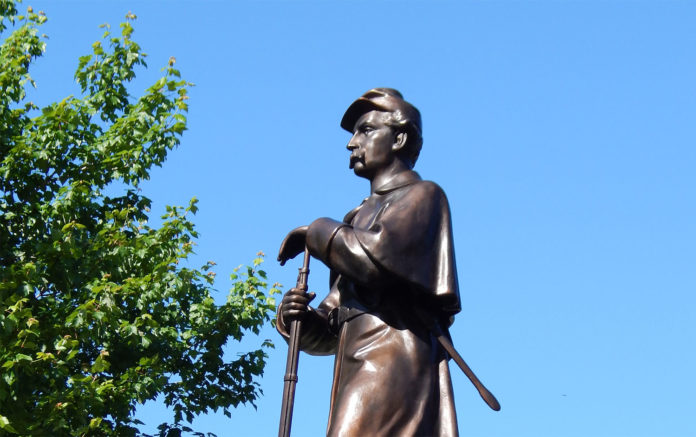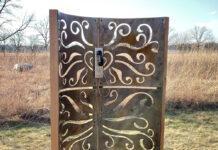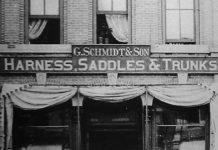The bloodshed might have been over, but the scars it left were still raw.
Although Robert E. Lee had surrendered 27 years earlier and the American Civil War was still fresh in the memories of the soldiers who had fought and the loved ones who mourned the fallen. In Mankato, veterans and their wives wanted to commemorate the sacrifices of their fellow Minnesotans. In 1892, the town came together to erect a beautiful bronze statue mounted over a trickling fountain to ensure that their struggles and losses would not be forgotten.
In creating their memorial, the Grand Army of the Republic discovered it had one more enemy to fight. Weather damage was less immediate than a Confederate bullet, but its effects were just as destructive. Weakened by vandalism, the statue toppled over during a severe storm and was never repaired. By 1927, the entire memorial had been removed and replaced with a simple plaque.
Mankato’s Boy in Blue Civil War memorial might have remained a casualty of history had it not been for elementary school teacher Bryce Stenzel’s boyhood enthusiasm for stories of the past. During a visit to his grandmother in 1977, the young Stenzel found a copy of Thomas Hughes’ History of Blue Earth County. As he was pouring over the accounts of bygone Minnesotans, he stumbled across a picture of an imposing memorial called the Boy in Blue Statue.
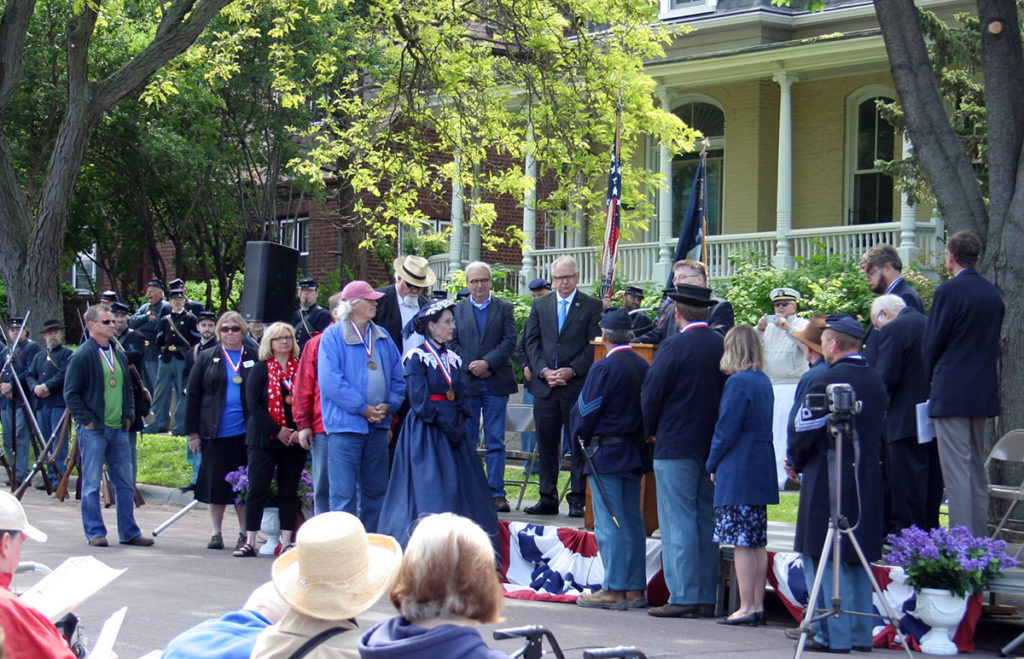
A vision takes hold
Stenzel was fascinated. He begged his dad to drive him to Lincoln Park to see the statue – and was shocked on their arrival.
“The 1935 memorial was there but the really cool part wasn’t there!” Stenzel said. “The statue and fountain were gone.”
Stenzel carried the memory of the vanished statue well into adulthood until he met a group from Mankato who loved and appreciated the history of their city. In 2010, on the cusp of the Civil War’s 150th anniversary, he and fellow historian Julie Schrader were discussing ways to celebrate the event. Both were fascinated by the part that Blue Earth County played in conflict.
They realized that while many towns in the South had memorials to fallen soldiers, the North had fewer.
My idea was that the North had heroes as well as the South. In every little Southern town you drive through there’s a statue of a Confederate soldier. I thought, OK, Mankato had this at one time, why is it that only the Southern side being told?Bryce Stenzel
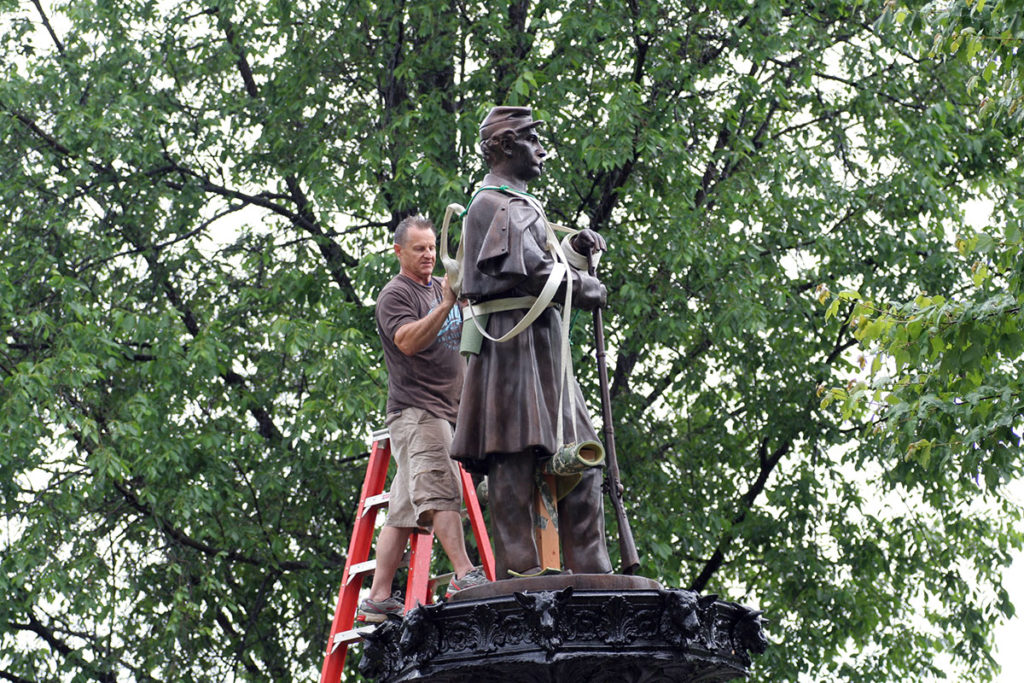
“The North is almost a victim of its own success – they fought the Civil War, they won the Civil War, and they moved on,” said Stenzel. “My idea was that the North had heroes as well as the South. In every little Southern town you drive through there’s a statue of a Confederate soldier. I thought, OK, Mankato had this at one time, why is it that only the Southern side being told?”
Schrader had seen old pictures of the Boy in Blue statue while researching local author Maud Hart Lovelace. She quickly fell in with Stenzel’s enthusiasm and they began wondering whether it was possible to replicate the original memorial.
“I felt that we’ve lost a lot of history in Mankato, and maybe this could be brought back with enough help,” Schrader said. “We learn from our past and if we don’t remember it, we risk repeating our mistakes.
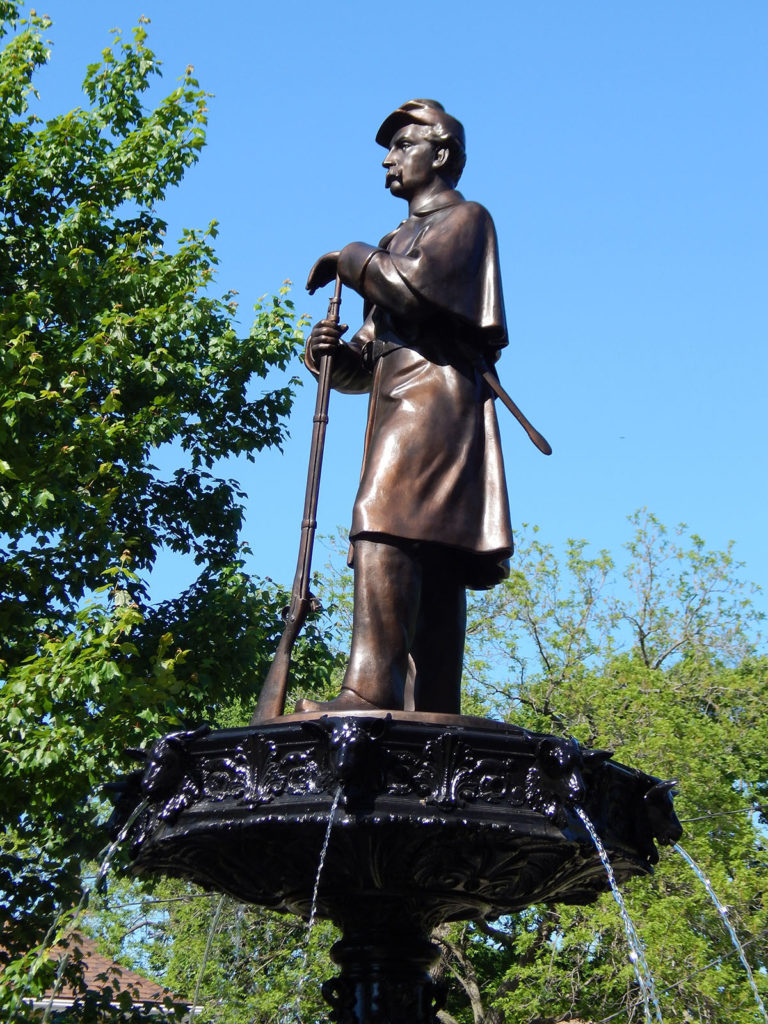
Reinforcements
Stenzel and Schrader assembled a group of like-minded individuals, and created the Boy in Blue Civil War Memorial Committee. Together, the committee raised funds for their project by holding special events, writing grants, and worked with the City of Mankato to have a replica of the memorial built on its original Lincoln Park location.
The team had a breakthrough when Stenzel’s sister, Laurie Stenzel, a City employee, volunteered her time to the project and discovered archived records documenting which company had manufactured the statue’s pedestal and fountain. The Boy in Blue committee tracked the company down and found the original blueprints, which they used when commissioning the new memorial.
“What you see is an exact replica of the original – the size, the dimensions, the height and width – everything is the same,” said Stenzel about the fountain base.
The statue itself was cast by a Texas artist/sculptor named Alan Gibson, whose specialty is restoration pieces. To avoid weather damage, the committee decided that learning from history was better than copying history exactly. They approved Gibson’s plan to create the new statue out of a sturdy composite material similar to fiberglass and paint it to resemble bronze.
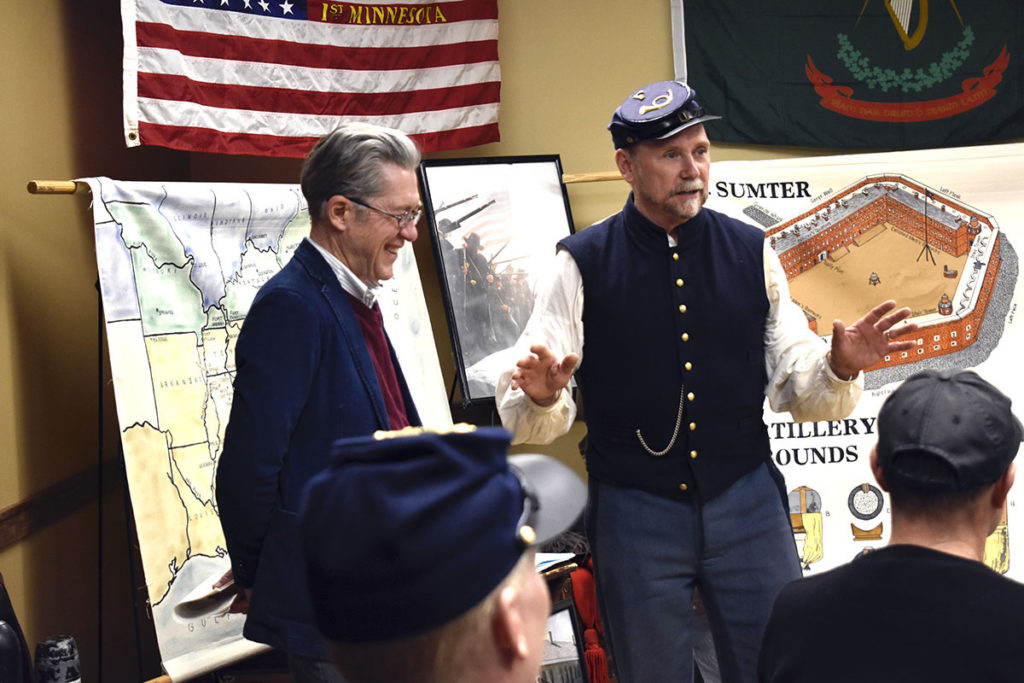
A proud achievement
The finished Boy in Blue’s dedication in 2015 was a proud day for its long-time champions.
“It took one year longer to build the monument than it took to fight the Civil War!” said Stenzel. The Friends of the Boy in Blue replicated the original statue’s dedication ceremony. More than 200 people attended.
Although their initial project was complete, the committee became even more dedicated to their mission to preserve history. They threw themselves into maintaining the memorial, fundraising by selling engraved pavers around the statue. It wasn’t enough for them to simply protect history. They wanted to bring it to life, too.
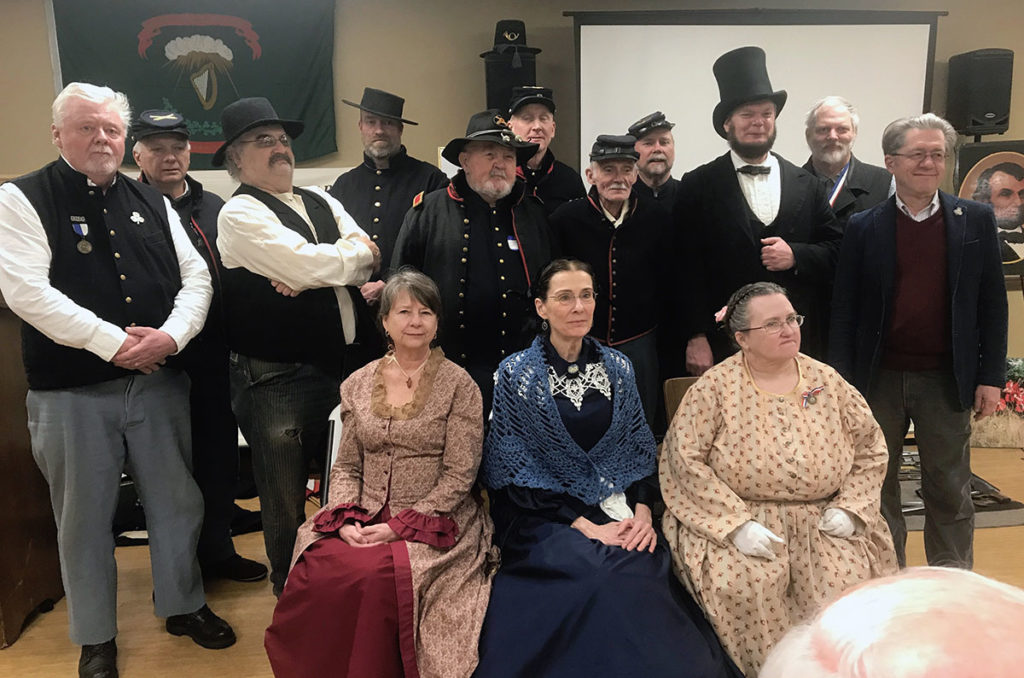
Coming to life
With the building portion of the project completed, the Boy in Blue Committee transitioned to become “The Friends of the Boy in Blue Civil War Memorial.” The organization is now a 501c3 non-profit, and is open for anyone to become a member and support the memorial.
In 2012, the Boy in Blue Committee launched their first Boy in Blue Civil War Symposium as a fundraiser. Held at the Blue Earth County Historical Society, the day-long event offered attendees a completely immersive experience. Presenters dress up in period detail, bring authentic Civil War artifacts, and dramatize the thrilling events of the past to make viewers feel as though they’ve stepped back in time.
The annual Symposium has been a hit with young and old alike, thanks especially to the presenters’ enthusiasm for the subject.
When you’re talking about history, you have to get into the specifics because the specifics are just so amazing. They’re stranger than fiction!Susan Hynes
“It’s bringing history to life for all people that the presenters have in common,” said committee member and living history actor Susan Hynes. “When you’re talking about history, you have to get into the specifics because the specifics are just so amazing. They’re stranger than fiction! Current history, things that have happened in this past year you would never have predicted, and history’s pretty much been like that always. If you just talk about history as a general timeline it gets sort of dull, but when you get into the specifics – people and social history – I think it becomes more interesting.”
“A lot of kids think history is boring, but I say ‘How can you think history is boring when you’re a part of it?’” said committee member Arn Kind, whose passion for the subject led him to found a one-man band living history lyceum called Historical Experiences. “Young people don’t realize that they are a part of history. They didn’t ask to be born when they were born, and someday people are going to look back at the time in which these young people were living and if they didn’t pay attention to what was going on, they’re not going to be able to talk about it. You don’t want to be just a witness to history, you want to be participants in making it.”
Virtual reenactment
Due to COVID-19, the 2021 symposium is being held virtually, but will still contain all of the excitement and insider knowledge as the in-person events. This year’s theme is The Coming Fury, and focuses on the turbulent years that preceded the Civil War and made the country ripe for conflict.
“We have a lot of people who are very knowledgeable about the Civil War who can share their understanding of it, whether it be the military side, the political side, the social side, women’s history – you name it,” Stenzel said.
Hynes said she is particularly excited for her role as Kate Warren, the U.S.’s first female detective, who helped thwart an assassination attempt on President Lincoln.
“I like bringing history to life,” Hynes said. “That’s what I hope to do with my portion.”
Her hope is echoed by her fellow presenters, who said that they are thrilled to have a chance to share their knowledge of Mankato’s heritage with its current citizens and help their community to appreciate their legacy.
“I think it [the Symposium] is essential to understanding what the Boy in Blue memorial is all about,” Stenzel said. “Otherwise, it’s like the pyramids or the Sphinx or Stonehenge – we see these monuments but we really don’t know what their original purpose was. We don’t want that to happen with this. We want people to understand what the Civil War was all about, because that really was a deciding moment in our history.”

